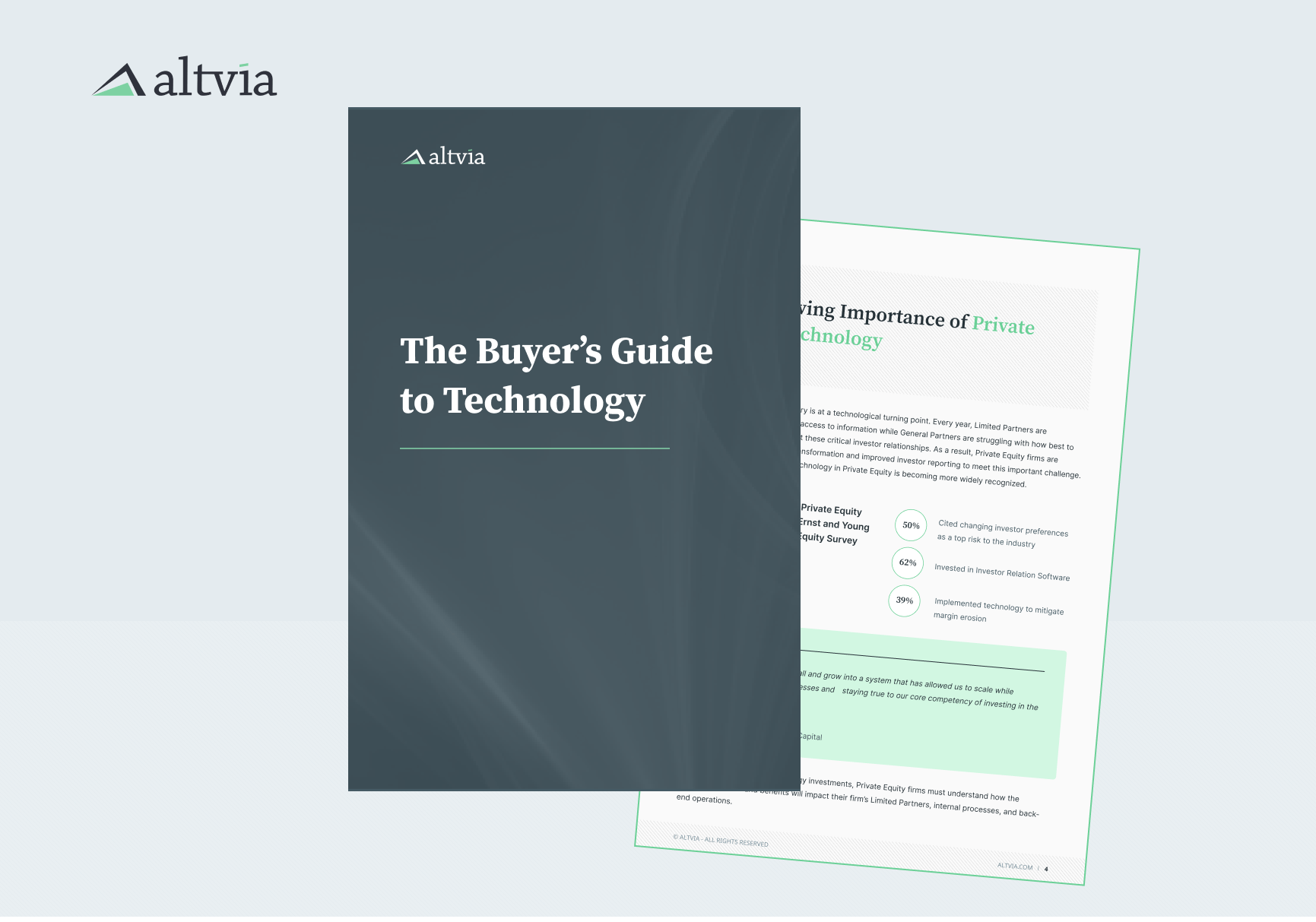Guides
Our guides are designed to help you and your firm stay up to date with the latest market insights, and actionable steps to evolve.

Guide | The PEriodic Table of Technology
A guide to show you how to structure your firm’s tech stack for more efficiency.

Guide | Establishing & Evolving a Tech Stack in Private Capital
In this guide, we take the guesswork out of the process and detail what firms need to know to make impactful change, in the context of your firm’s current state or status quo.

Guide | The Buyer’s Guide to Technology
In this guide, we cover what to look for when evaluating Private Equity software and provide the questions to ask to determine how to select the best solution for your firm’s needs.

Guide | Data & Technology Guide for Private Equity Firms
Learn how to thoughtfully develop future-proof solutions that not only optimize your current processes, but also scale with the challenges that come with tomorrow.

Guide | How-To Create a Modern LP Experience
In this guide, we unlock the secret of how firms are effectively leveraging technology to increase investor confidence, satisfaction, and commitments.

Guide | How-To Win Deals in a Hyper-Competitive Market
We’re in the midst of a big shift. The world is changing every day, and there’s uncertainty in our lives and the market.
Schedule a Demo ➔
You’ll be amazed at what Altvia can do for you and your team. Let’s talk and see how we can help.

